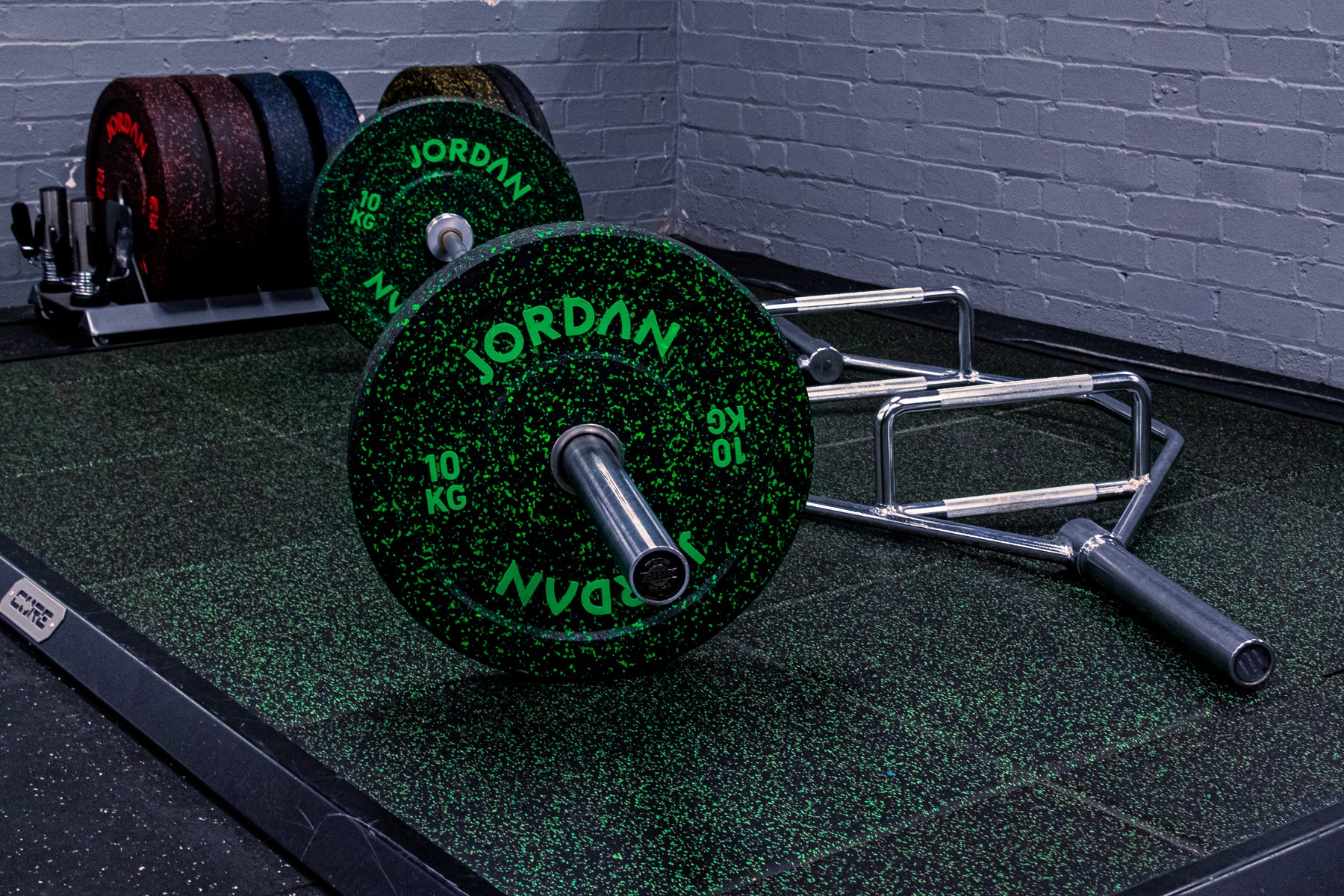
Strength Training with Triathlon Training: to lift, or not to lift?
Introduction
There’s no denying that a triathlon is one of the most demanding endurance sports when it comes to training, preparation and competing. Having to refine your craft in not just one, but three disciplines is no simple task.
So is it really necessary to add a fourth pillar into the mix with strength training?
With plenty of burnout and mistakes made along the journey, we've collated our top insights from years of strength training alongside various distances of triathlon, including 140.6, 70.3, Olympic and sprint.
This article will discuss why strength training deserves a place in your triathlon training program, what you should focus on and how best to weave it into a busy training schedule.

The Benefits of Strength Training with Triathlon Training
Aerobic capacity has a lot of buzz around it in the current world of endurance training, and rightly so, as it’s a proven fitness metric that will allow you to endure extended periods of exercise.
However, strength training could potentially be the missing piece of the fitness puzzle that can unlock the next level of performance for triathletes.
Here are our top-three benefits of strength training for triathletes:
1. Injury prevention
Applying external resistance through strength training helps to break down tissue and when supplemented with appropriate rest, your body recovers stronger. This process can fortify muscles and bones from potential overuse injuries and helps to reinforce joints and ligaments.
This is particularly important if you’re training for longer distance events such as; Olympic, middle and long-distance triathlons.

2. Improved efficiency and force
A stronger body has greater stability and can exert more force. Combine this with a robust endurance base and you can expect to develop a stronger and more efficient swim stroke, as well as enhanced power-output during the bike and run.
A stronger core and improved muscular endurance can translate into better control of your form under fatigue, which is crucial during the latter portions of a triathlon.

3. Variety in your training
We know what you’re thinking, ‘surely three disciplines is enough variety’, and yes, whilst you’re not wrong, it is worth highlighting that swimming, cycling and running are cardio-based training disciplines.
Sure, you can throw interval workouts into the mix, whether that’s in the pool, bike or track, but at the end of the day, whilst the shorter sprint workouts may work your anaerobic energy system, in most cases they will not add enough external resistance to signal to your body to grow stronger.
A 30-60 minute strength training workout provides another option to challenge you mentally whilst improving your body in a different way physically.
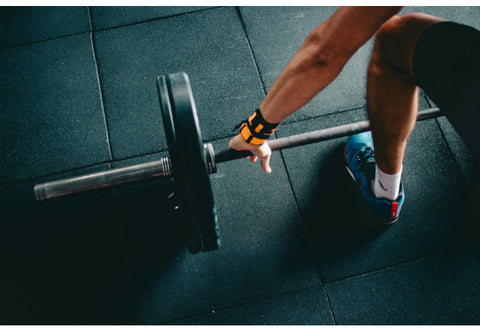
What Type of Exercises Should You Be Doing?
Exercise choice
Our number one advice when it comes to strength training for triathletes: don’t overcomplicate it.
Instead, prioritise compound exercises that can be supplemented with isolation exercises for specific exercises.
For example, there are bang-for-your-buck exercises that will directly train the same muscle-groups that you will use during a triathlon, whilst also building your core and stabilising muscles.
This includes most of the commonly recommended compound exercises like squats, deadlifts, shoulder press and bent-over rows.
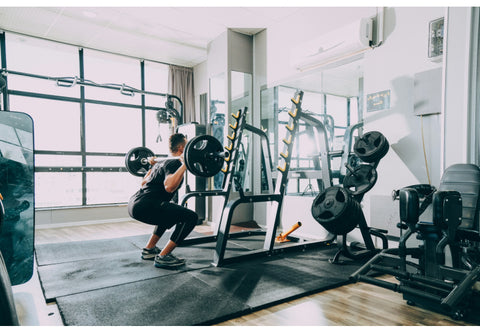
However, if you were to create a strength-training workout that only focused on compound exercises, you’ll be missing out on targeted training for specific muscle groups.
But be weary of creating a workout that only focuses on isolation exercises via the use of machines, as you won't reap the benefits that compound movements bring for your stabiliser muscles and core.
Summary of exercises
Compound exercises:
- Squats (traditional high-bar, low-bar, dumbbell or split squats)
- Deadlifts (conventional or sumo)
- Stiff-legged/Romanian Deadlifts
- Barbell/Dumbbell Lunges
- Bent-over Row
- Shoulder Press
- Bench Press
- Kettlebell Swings
Isolation exercises:
- Lat Pulldown
- Seated Row
- One-arm Dumbbell Row
- Cable/machine Chest Fly
- Seated Leg Press
- Calf raises
- Lying or Seated Hamstring Curl
Callisthenics (with added weight where possible):
- Pull-ups
- Push-ups
- Tricep dips
- Box jumps

Rep Ranges
This is a widely discussed topic in the world of health and fitness. However, as it pertains to strength training for triathletes, a balanced approach should be applied.
As a general rule of thumb, rep ranges achieve the following outcomes when trained at the appropriate intensity:
- Low rep ranges with high weight will build upon your strength and raw force output.
- Medium rep ranges with medium weight will promote greater muscle hypertrophy (muscle breakdown and growth)
- High rep ranges with low weight will improve muscular endurance and can provide cardiovascular benefits depending on rep speed and volume
We would suggest keeping your strength training workouts varied to reap the desired benefits listed above.
Quick tip: if you’re going to combine low, medium and high rep workouts in one session, we’d advise starting with the lower rep, higher weights first. It’s better to hit these exercises whilst your mind and body are fresh to avoid injury due to fatigue/form breakdown.
Listen to your body if you’re feeling fatigued, but know when to keep yourself accountable if you can see your workouts are stagnating without progression in previous weeks.
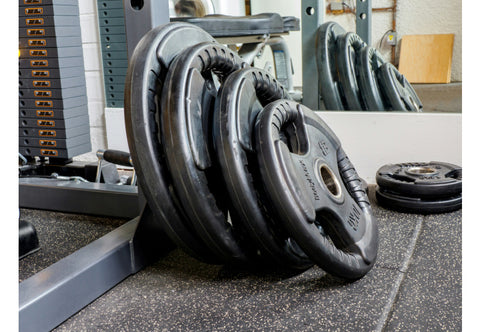
With any strength training approach, there is one common action that must be taken: track your progress. There are plenty of free mobile apps available to track weight lifting progress, which is essential to see how you’re progressing over time. Increasing your weight capacity or rep volume on core lifts is key to building strength and muscle.
Integrating Strength Training into Your Triathlon Training Plan: Top Tips
The fifth pillar: recovery
Perhaps one of the most important points of this article that can’t be stressed enough: you MUST allow adequate time for recovery between your training sessions, especially if you’re hitting the same muscle group two or more days in a row.
Getting high-quality sleep will boost the recovery of your body both physically and mentally.

Self-assessing fatigue through your cognitive function and muscle soreness is one way of determining how well you have recovered from the last session, but wearable devices can help spot other less obvious signs of fatigue, including resting heart rate and Heart Rate Variability (HRV).
Nutrition and calories
By this point in your training, you’ll likely be aware of the importance of protein as it relates to cell growth and repair in your body. As you increase the level of stress on your body through strength training, ensuring that you are dialled-in on your protein intake is absolutely essential so your body can repair fully.
Most experts generally recommend 0.7-1g of protein per lbs. of body weight.
Triathlon training in itself is incredibly demanding on calories, so eating enough overall calories through carbs, fats and micro-nutrients will play a vital role in energy and hormone levels which should not be underestimated.

Most popular fitness wearables can provide you with an estimate of your daily calorie expenditure from training sessions as well as during rest or general activities (i.e. walking). Combining this with a calorie-tracking log (manual or via a mobile app) can give you an idea of calorie consumption versus expenditure of a given day.
If you are going to focus on increasing muscle-mass through your strength training, then eating slightly more calories than your body has burned in one day is generally recommended to support new tissue growth and ensure you have the energy levels needed to perform in your next session.
Tracking your body weight each week, as well as reviewing training performance (mentally and physically), is a useful way to gauge if you’re undereating or overeating and need to make adjustments for the following week.

Periodisation
If you’re developing your own training program and haven’t recruited the expertise of a training coach, we would suggest periodising your training over the course of 6-12 weeks at a time, depending on your preference.
After the end of your 6-12 week training block, review how it went alongside your triathlon training. Were you able to progress on your major lifts? Did your triathlon workouts suffer as a result? Did you have to adjust too many training sessions due to being too sore or fatigued from previous training days?
Adapt the next 6-12 weeks accordingly in terms of strength training scheduling and programming.
Strategic scheduling
When looking at a week of training, it can be tricky to decide where to place your strength training alongside your triathlon-specific workouts.
Before you decide to try and fit 5 strength training sessions into your training week, it’s best to assess where you are in your triathlon training and what you would like to prioritise.
Do you need to work on your swim speed? Is there a focus on working on your Zone-2 run distance? Are you struggling to increase your FTP on the bike?
These questions should determine how your week is structured.

For example, if improving bike power output is a focus, then scheduling your intense bike workout before your day of heavy squats is recommended. If improving your squat weight is a priority over increasing your FTP, then the opposite approach should be applied.
Specificity is important as it pertains to improving on any discipline, as is prioritising training focuses based on your energy/fatigue levels at the start of a training week.
Scaling back before the event
The start of winter training/end of race season can be a great place to start with your strength training. This gives plenty of time to experiment with different training blocks before you get into a more specific triathlon training.
Most pro's will cut back on strength training early in order to allow for many months working specifically on the triathlon disciplines, but for semi-pros or amateurs, there is no law to say that you cannot continue to strength train in the warmer training months.
In any case, if you’re a triathlete aiming for competitive results, then it would be advised to scale back strength training as you get closer to race day.
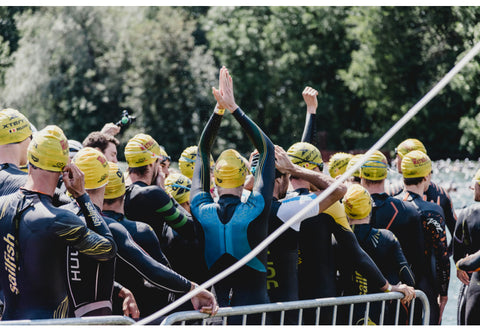
As mentioned before, specificity is important to improve any skill, so prioritising the areas you want to improve and creating specific workouts around them will net you quicker results.
If you’re less competitive with triathlon racing, then it is still advised to scale back before race day. The last thing you want during the race-day swim leg is realise you have no upper body endurance due to residual fatigue from the intense upper body session within the week prior.
Consistency
As with any form of training, progress in strength training takes time. To reap the benefits of strength training it shouldn’t be something you “think you might do” once or twice a month.
You should commit to a weekly training schedule that includes at least 2-3 sessions. This can be scaled back as you complete a 6-12 week training block (to promote better recovery) and as you get closer to race day.

Balance
When setting out your strength training as part of your triathlon training plan, ensure that you’re including all of the major muscle groups to build a holistically resilient body.
For example, just because a triathlon demands the most from your legs, shoulders and back, shouldn’t mean you neglect your chest or core. A weaker front body can result in poor posture on the bike, resulting in long-term back pain.
Conclusion
Strength training has the potential to be a valuable component of your triathlon-training program. Whether you're a seasoned triathlete or just starting out, don't overlook the advantages that it can provide on your triathlon journey.
By incorporating, and being consistent with, strength training workouts in your overall program, you can develop a strong foundation that will ultimately lead to better performance in the water, on the bike, and during the run.
At the time of writing this article, we are yet to find a strength training program that perfectly aligns with triathlon training, and to be honest, we’d be sceptical if we ever found one claiming to be.
There is no perfect answer to what your program should look like, as in most cases it comes with a large degree of trial and error.
Thanks for reading!
If you have any feedback, want to share training tips, or want to know about specific training equipment, drop us a line at sales@triathloncamp.co.uk
Check out our top strength training products below:


Leave a comment